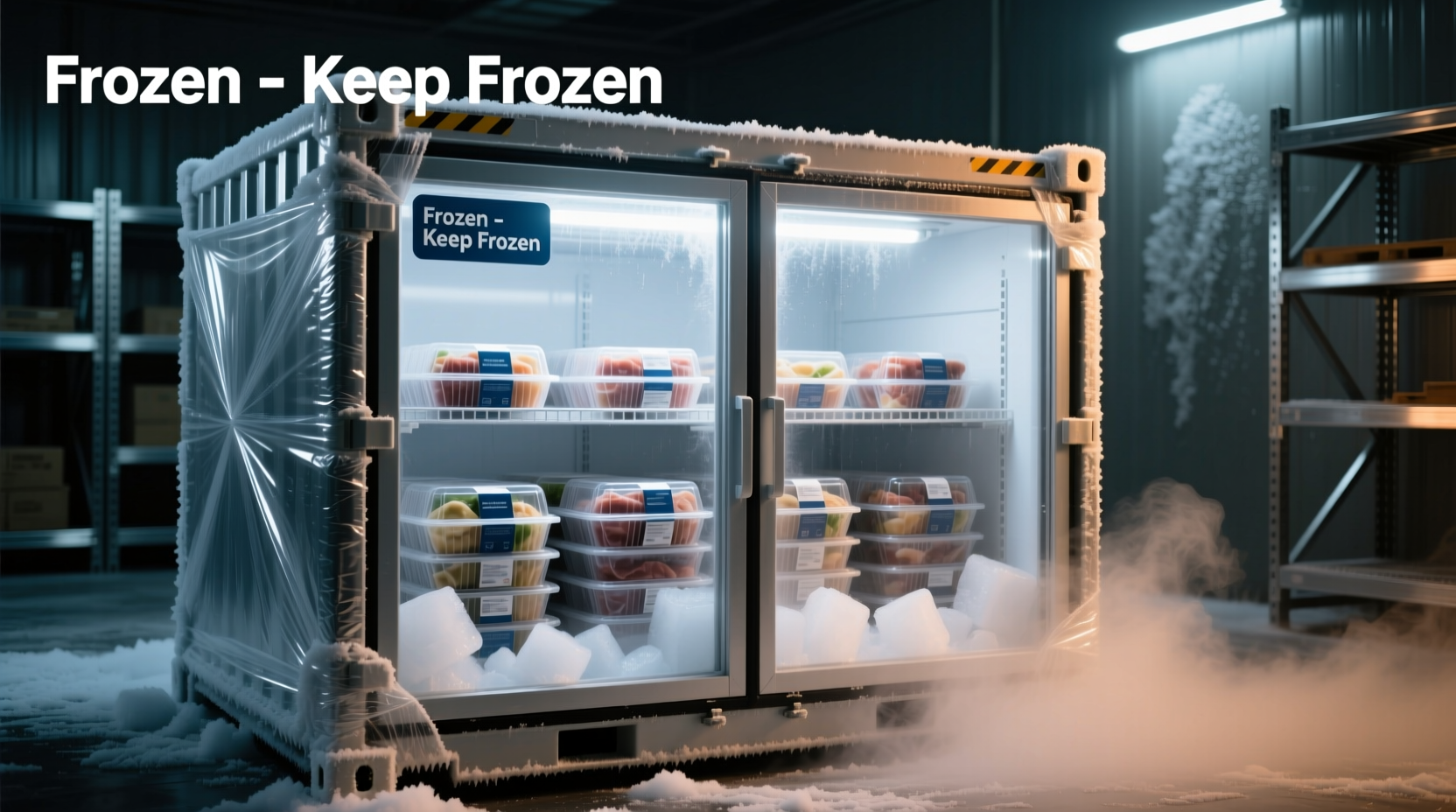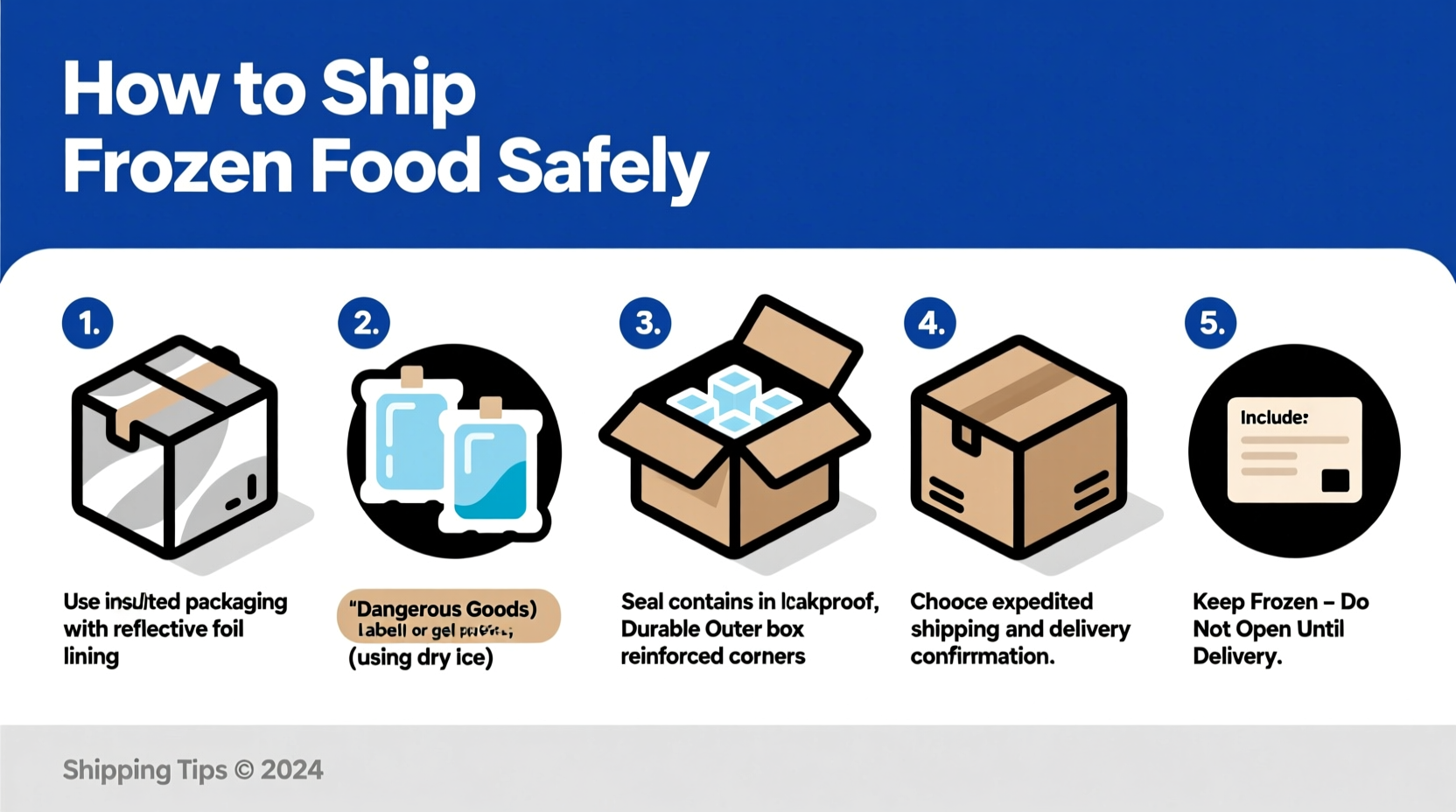Understanding Frozen Food Shipping Requirements
Shipping frozen food isn't as simple as tossing items in a box. The USDA Food Safety and Inspection Service mandates that frozen foods must remain at 0°F (-18°C) or below throughout transit to prevent bacterial growth and maintain food safety. According to FDA guidelines, perishable foods enter the "danger zone" between 40°F and 140°F, where bacteria multiply rapidly, making proper temperature maintenance critical during shipping.
| Temperature Threshold | Food Safety Risk | Maximum Exposure Time |
|---|---|---|
| 0°F (-18°C) or below | Safe for indefinite storage | Entire shipping duration |
| 0°F to 40°F (-18°C to 4°C) | Moderate risk | Maximum 2 hours |
| Above 40°F (4°C) | High risk of spoilage | Maximum 1 hour |
Essential Pre-Shipment Planning
Before packing your frozen items, verify both federal and destination state regulations. The USDA requires that all commercially shipped frozen foods maintain proper labeling with ingredients, handling instructions, and "Keep Frozen" statements. Home-based food shipments face additional restrictions—many states prohibit individuals from shipping homemade foods across state lines without proper licensing.
Consider your shipping timeline carefully. Most carriers recommend against shipping frozen food for more than 48 hours unless using specialized temperature-controlled services. For longer distances, calculate shipping times using the carrier's service map to ensure your package won't sit in transit over weekends when temperature control is less reliable.
Required Packaging Materials
Effective frozen food shipping requires multiple layers of protection:
- Insulated container: Use a double-walled corrugated box specifically designed for temperature control or a reusable insulated shipping container
- Cooling agents: Choose between dry ice (solid CO₂) or frozen gel packs based on shipping duration and regulations
- Temperature monitoring: Include at least one temperature data logger to verify conditions throughout transit
- Vapor barrier: Line the container with a food-grade plastic liner to contain any moisture from melting
- Absorbent material: Place paper or cellulose-based absorbents beneath food items to manage condensation
When using dry ice, follow USPS Publication 52 guidelines which require proper ventilation markings and limit quantities based on container size. The Federal Aviation Administration restricts dry ice to 5.67 pounds (2.5 kg) per package for air transportation, requiring special labeling as "Carbon Dioxide, Solid, UN 1845" with hazard class 9 designation.

Step-by-Step Packaging Process
Follow this evidence-based packaging sequence for optimal results:
- Pre-freeze all food items to 0°F (-18°C) or below before packaging
- Wrap individual food items in moisture-proof barrier materials
- Place frozen gel packs or dry ice at the bottom of the container
- Arrange food items in a single layer with space between packages for cold air circulation
- Add additional cooling agents on top and between food items as needed
- Fill empty spaces with crumpled paper to prevent shifting during transit
- Seal the container with waterproof tape using the H-seal method for maximum security
- Apply all required labeling including "Perishable," "Keep Frozen," and dry ice warnings if applicable
Carrier Selection and Shipping Options
Not all carriers offer equivalent frozen food shipping services. Compare these critical factors:
- USPS: Allows frozen food shipments with proper packaging but doesn't guarantee temperature maintenance. Prohibits dry ice in Priority Mail Express to Alaska and Hawaii. Best for short-distance shipments within 24 hours.
- FedEx: Offers specialized FedEx Cold Chain services with temperature monitoring. Allows up to 10 pounds of dry ice per package with proper documentation. Provides next-day and 2-day frozen shipping options.
- UPS: Provides UPS Temperature True services with real-time temperature tracking. Permits dry ice shipments up to 6.6 pounds per package. Requires special packaging certification for temperature-controlled shipments.
For shipments exceeding 48 hours, consider premium services with active temperature monitoring. The International Safe Transit Association (ISTA) certification for packaging ensures your container meets industry standards for temperature maintenance during transit.
Cost Considerations and Budgeting
Shipping frozen food typically costs 30-50% more than standard shipping due to specialized packaging and expedited services. Budget for these often-overlooked expenses:
- Insulated containers ($3-15 each depending on size)
- Dry ice ($1.50-$3.00 per pound with rental fees for shipping containers)
- Temperature monitoring devices ($10-50 per shipment)
- Expedited shipping rates (typically 2-3x standard rates)
- Special handling fees for dry ice shipments ($10-25 per package)
For frequent shippers, consider reusable insulated containers which pay for themselves after 5-7 shipments. Always request a shipping quote that specifically mentions "perishable" or "temperature-sensitive" to ensure proper handling throughout the shipping process.
Troubleshooting Common Shipping Issues
Even with careful planning, problems can occur. Here's how to address common issues:
- Partial thawing: If items arrive partially thawed but still cold (below 40°F), they can be safely refrozen if ice crystals remain. Discard any items that have reached room temperature.
- Dry ice sublimation: Expect 5-10 pounds of dry ice to last approximately 24 hours in a well-insulated container. Use more dry ice than you think necessary, as it sublimates faster when exposed to warmer ambient temperatures.
- Condensation damage: Prevent "freezer burn" during transit by ensuring proper vapor barriers and absorbent materials are used between food items and cooling agents.
- Delivery delays: Choose delivery options that avoid weekend transit when possible, as most carriers don't maintain temperature controls in sorting facilities over weekends.
Special Considerations for Different Food Types
Certain frozen foods require additional precautions:
- Seafood: Must be shipped at -10°F (-23°C) or lower to prevent texture degradation. Use extra gel packs surrounding the product.
- Baked goods: Require moisture barriers to prevent ice crystal formation on delicate surfaces. Freeze solid before packaging.
- Ice cream: Needs ultra-low temperatures (-20°F/-29°C) and shock-resistant packaging to maintain texture. Consider specialized ice cream shipping containers.
- Medical items: Prescription frozen medications require additional documentation and may need specialized pharmaceutical shipping services.











 浙公网安备
33010002000092号
浙公网安备
33010002000092号 浙B2-20120091-4
浙B2-20120091-4